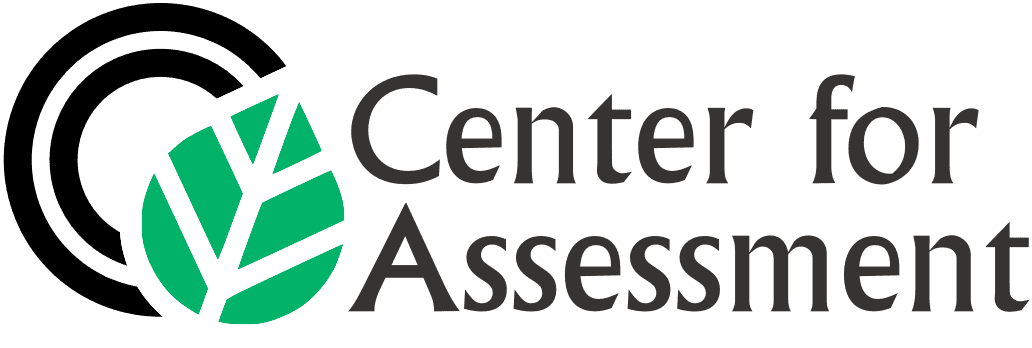DESCRIPTION
Please note that this online learning path was revised based on feedback from districts.
What is the problem?
We see some common issues repeatedly with assessment systems. These include the use of too many assessments, duplicative assessments, assessment approaches not matched to instructional or monitoring needs, or assessments that do not adequately address the depth of the standards. Using the right combination of assessments to supply a variety of information to support different types of educational decision-making is at the heart of what is known as “balanced assessment systems.” The goal is to free up instructional time by removing assessments that are not useful for supporting better decision-making in schools or classrooms!
What is one solution?
Conducting an “assessment system review” involves examining all the assessments that a student completes in a year. Considering the breadth and type of assessments that one student experiences is an important step toward understanding whether these are the right assessments being used for the right uses or if your school or district needs to make some adjustments to the assessments for that grade level. In some instances, lessons learned for one grade level can be applied to others within the grade-span.
Learning Path
The Assessment System Review online learning path empowers teams of school/district leaders and teachers with the knowledge, skills, and tools to conduct an assessment system review. Designed in partnership with the National Center for the Improvement of Educational Assessment, this learning path contains seven modules of multimedia content, with tools to facilitate the collection of assessment information and evaluation of whether the assessment system is meeting the information needs of classroom teachers and school and district leaders. Users are able to decide on the pacing, as well as the level of learning and support that they need to complete the review process.
Module 0: Planning an Assessment System Review
Module 1: Prepare to Launch
Module 2: Clarify the Instructional Vision
Module 3: Reflect on Assessment System Needs
Module 4: Conduct the Inventory
Module 5: Evaluate the Inventory of Assessments & Write Recommendations
Module 6: Create Action Plan
DEVELOPED IN PARTNERSHIP WITH

DISTRICT TESTIMONIALS
“We wanted to evaluate our assessments in our district. We had feedback from our teachers about the assessments that we were using at the district level. They didn’t feel that the data that they were receiving was useful for their classrooms and so we wanted to look into that. They also felt that there was a lot of time that was used for the assessments that were taken away from classroom instruction…We wanted a process…We didn’t want to go by, just feel or opinion …[this] gave us a process to use to go through.” Brooke Smothers-Strizic, Bakersfield City School District
“We knew there was something underlying that was consuming the time of our teachers in the classroom, but we didn’t quite know how or to what degree. And so I think that we had the right intentions that we wanted to give them the time to actually do the instruction right, and ensure the data they were collecting was meaningful to guide the instruction. And so I think that you can’t do that if all you’re doing is spending your time assessing, assessing, and assessing, without getting to the actual planning and instruction. So I think this process…just makes it more systematic: asking the right questions, the leading questions, to really force you to have those conversations that you’re documenting in a way that then you have the evidence [such as] the number of minutes that people were actually spending [on each assessment]. And then you can start evaluating the information and think: Is there a better way? I think the one thing that I myself personally have gained from this process is seeing the impact. As you’re removing assessments you know it’s going to make an impact instructionally for students and for teachers.” Rocio Muñoz, Bakersfield City School District
“Who is looking at this information? Who’s looking at the data? Is it for the teacher? Is it for the [school] administrator? Is it for the district? …I feel like, that’s a really super important question that sometimes we don’t ask ourselves enough. …When you’re doing the work you’re like, ‘This is important information, this [assessment] is needed.’ But then, when you’re actually in the classroom, you may be like, ‘Why are we doing this? Because we don’t even use this information.’ So I think it’s super important to always ask ourselves: What is the purpose of the assessment? Who will use this information? Why are we giving this assessment? And what are we going to do with this information?…That then helps us determine how many assessments we need and when we need them?” Beatriz Chavez, Coachella Valley Unified School District
“Think about your key players and build your team of who you want to complete the work. [Make sure] you know the time commitment, so that you don’t get halfway through and let it fizzle out because you really should see it through the end because that’s where the meat and potatoes of it is. That ending piece was kind of where we were like, ‘Wow! We really learned a lot.’ And so you want to get to that end result. So really, again, having an action plan for how you’re going to make sure you get through the modules. But just knowing, too, that you really do get a lot of really good insight and good information, you can then make a lot of really good decisions to improve practices. And if that’s what you really want to do, you will get that out of the process.” Tara Hinchen, Coachella Valley Unified School District
INSIGHTS FROM DISTRICTS’ ASSESSMENT SYSTEM REVIEWS
To learn more about districts’ experiences in conducting an assessment system review, read the blogs below published by the Center for Assessment.
- Bakersfield City School District – Eliminating Unnecessary District-Required Assessments
- Coachella Valley Unified School District – Bringing a Fresh Perspective to Assessment Purpose
